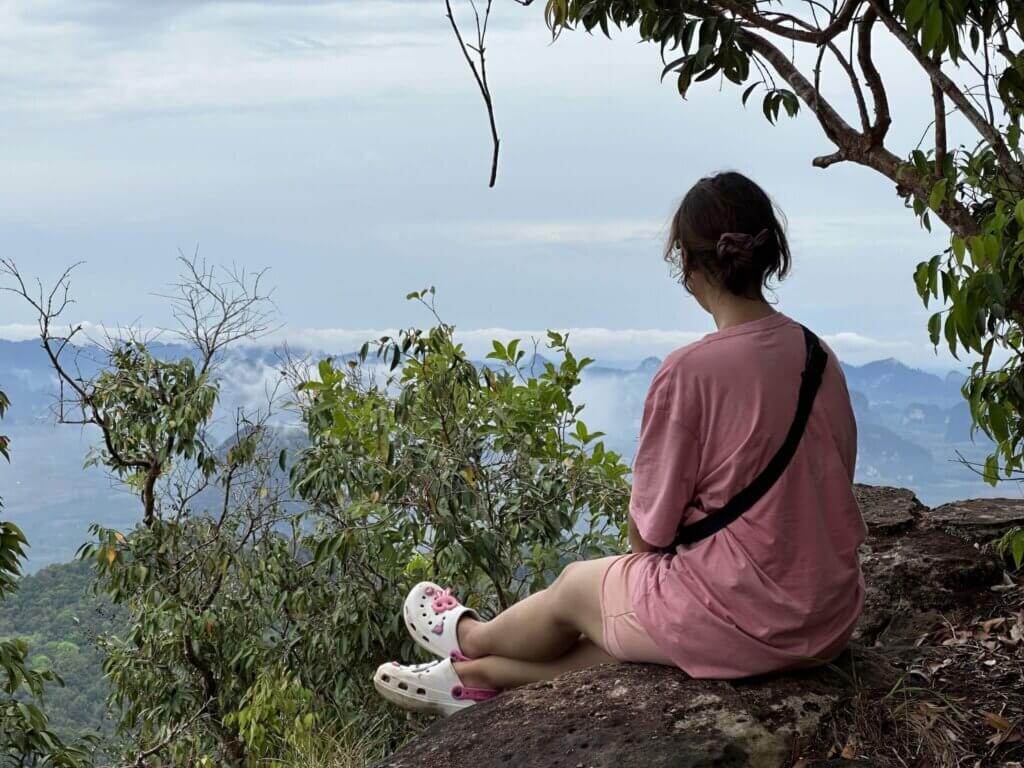If you are a snow trekker, which month should you choose? December is a popular choice for experiencing the benefits of trekking. But my answer may leave you shocked. If you want to do the best winter trek in snow, avoid the month of December.
Choose January and February instead because January and February bring out several unseen benefits of the Himalayan Treks.
Many trekkers raise their eyebrows after hearing this advice.
For many people, the snow is the best time to go on a trip in December! And I get why. That’s when they have their holidays. Their kids are off school for Christmas and New Year’s. They may want to use up their remaining vacation days before the year ends. But they overlocked the benefits of trekking in January or February.
On another point, hikers often think of December as the same as winter. Not many people even consider January and February as part of winter.” So, in this article, we’ll explore the advantages of trekking in winter compared to the usual choice of December. This is something only a few people talk about. Let’s dive right in:”
Crowded Trekking Trails: Disturb the Snowy High-Altitude Adventure
Research found that more hikers head to the mountains in December compared to the usual snowy season!

The graph above displays a significant increase in crowds during December, followed by a substantial decrease in January and February. This data covers four years.
The downside of trekking in December is the most unfortunate aspect!
It takes away all the enjoyment and peacefulness of trekking in the Himalayas. Loud music plays on speakers in places where it should be quiet and calm. Instead of peaceful nights, there are campfires, drinking, and noisy behavior. Campsites are stretched thin on resources — room, water, and bathrooms (campsites often turn into areas filled with human waste).
Besides that, December brings its own set of challenges. (1) Airplane tickets cost a lot during this period (even if you reserve them early). (2) Hotels charge nearly twice their usual price (if any rooms are available).
But if it’s a climb to the top, many people are there. They line up and wait long, and hundreds of people stand at the top. I can’t imagine what that summit experience is like!
The Big Snow Season: Why trekkers must shift focus to Jan-Feb
The many people in December might discourage any careful trekker, but the main reason for trekking in January or February is different. January and February (until mid-March) are the real heavy snow months for the full benefits of trekking. It’s not December. December is just the start of winter. It’s when the first snow of winter arrives. But that’s just the beginning.
The real winter arrives only in January and February in their area, covering all Himalayan treks with a thick layer of snow. January and February are the “Big Snow Season” at Mellow’s Life.
A weather expert, Akshay Deoras, has been forecasting for 12 years. “What we consider early winter (October-December) is officially considered post-monsoon. Only January and February are officially seen as winter,” he explained.
This is where I want to stress my advice to you. Many of us head to the mountains in winter to escape the city’s noise and chaos or trek in a beautiful snowy landscape. And there’s no better time than the Big Snow Season to experience this. Here’s why:
1. There’s more snow deposit: Crisp and Clear Views compared to December
In India, winter snow arrives from the west, brought by western disturbances. Usually, there’s just one wave of this in December, but during the Big Snow Season, which is from January to February, there are at least 2-3 waves. These waves are more robust, bringing more snow until April ends.

The snow during January and February, the Big Snow Season, is the deepest on all treks. This snow is what makes your snowy experience genuinely authentic. From the beginning of your trek, you’ll find yourself in enchanting snowy scenes. The forest trees are covered with snow, creating a fairy-tale-like atmosphere. You’ll see vast white blankets covering meadows and clearings as you go higher. The ground beneath your feet feels like soft powder. Our camps are usually set up right amid all this snow.
Most of the winter photos you see from Himalayan treks are taken during this Big Snow Season, not in December!
2. Greater chances of Snowfall: Challenging Yet Invigorating Weather
More WDs mean more chances of snowfall. I know this is what trekkers dream about experiencing! So, if you want an exciting snowy adventure with a good chance of snowfall, the Big Snow Season is your best bet.
Some of you might worry about the thick snow making it hard to finish your trek. But I’ve seen that having an excellent technical team with you is vital to finishing strong. Now’s the perfect time to get going.
3. Unique Flora and Fauna: Discovering the Fascinating Plant Life of January and February
Trekking in January and February unveils a different side of nature, characterized by unique flora and fauna that thrive in colder climates. From spotting elusive wildlife to marveling at winter blooms, these months offer a diverse array of natural wonders waiting to be discovered.
Keep an eye out for seasonal surprises such as frost-kissed foliage, icicle formations, and the occasional sighting of elusive snow creatures, adding an extra enchantment to your trekking experience.
4. Cultural Encounters: Experience Traditional Winter Celebrations
Going on hikes in January and February lets you dive into the customs and traditions of the local community. Unlike the peak tourist season of December, you’ll have more opportunities to interact with communities, gaining insights into their way of life and customs. Whether sharing warm tea with villagers or participating in traditional winter festivals, these cultural encounters enrich your trekking journey and create lasting memories.
5. Enhanced Photography Opportunities: Capturing Winter’s Majestic Beauty
The winter months offer photographers a unique canvas to capture stunning landscapes bathed in soft light and crisp air. From dramatic sunrises and sunsets to glistening frost-covered trees, the beauty of nature takes on a magical quality during January and February.
With fewer crowds vying for the perfect shot, you’ll have ample opportunities to unleash your creativity and capture the essence of winter wilderness in all its glory.
In conclusion, while December may be the go-to month for trekking enthusiasts, venturing out in January and February unveils a treasure trove of hidden benefits of trekking. From tranquil trails and favorable weather to unique wildlife sightings and cultural experiences, these months offer distinctively rewarding benefits of trekking.
So, why not step off the beaten path and embrace the enchanting allure of winter trekking? Embark on your adventure and discover the untold wonders that await amidst the snow-capped peaks and pristine landscapes of January and February.
To view our YouTube videos, click the button below.
Important Announcement:
If you are thinking about trekking in nepal for enjoying benefits of trekking, then look no further, book with Alpine Ramble Treks for buget friendly trek and 5% discount also available for Mellow's life Fan, to receive the offer click the button below.
Read More:




Pingback: Simu